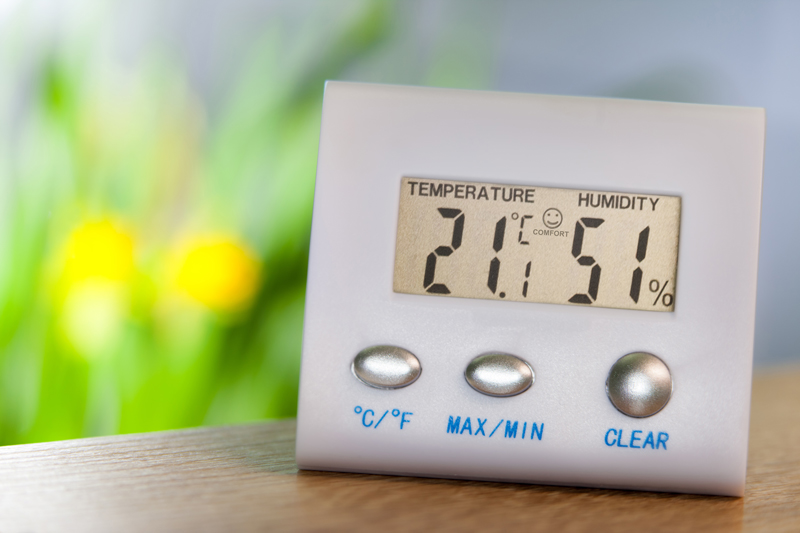In the winter, people often complain about their dry skin. You may not know this, but dryness on your skin can come from a lack of moisture in your home. Too little humidity can have a huge impact on your home’s comfort, as well as too much humidity.

Finding a Happy Medium
Aside from clean air, good indoor air quality involves controlling humidity levels in the home. Too much humidity can create an environment conducive to the growth of mold. Not enough humidity can cause serious respiratory problems.
During the cold season, more than 25 million Americans use humidifiers to make dry household air more comfortable. Make sure you’re getting safe, clean humidity by following these simple guidelines:
- Choose an evaporative type humidifier. Don’t use one that creates tiny water droplets. Scientific tests prove that furnace-mounted, evaporative humidifiers do not emit bacteria or contribute to mold growth.
- Clean your humidifier regularly. If you use a portable humidifier, the U.S. Consumer Products Safety Commission recommends cleaning the reservoir often to prevent possible mold or bacterial growth. If you use a furnace-mounted humidifier, contact your local heating and cooling contractor for an annual maintenance check and to replace the water panel.
- Make sure your humidifier has an accurate control system. The Environmental Protection Agency recommends keeping indoor relative humidity at 30-50%. Too much humidity can create condensation on cold windows and encourage the growth of mold and dust mites; too little causes damage to your home and furnishings.
The Right Level
One effective way to maintain a healthy level of humidity is by using a whole-house humidifier that fits right into your existing ventilation system. Proper humidity levels can be achieved safely and conveniently with the Aprilaire Whole-Home Automatic Humidifier, the world’s first completely automatic humidifier. The advanced computer technology measures the outdoor temperature and indoor humidity more than 86,000 times a day and continually adjusts the indoor humidity to optimum levels. This feature allows homeowners to effortlessly control humidity at the levels recommended by the EPA.
Humidity is important, but too much or too little can produce a host of health problems or cause damage to your home. When the air in your home is too dry, it can crack the walls and ceilings and shrink the framing around windows and doors, allowing cold air inside. As a result, your home becomes less energy-efficient. Dry air also saps moisture from your body, leading to conditions such as a dry nose, scratchy throat and itchy skin. In addition, when the respiratory system is dry, it is easier for viruses to invade and increases your chances of getting colds, flu and upper-respiratory problems.
Too much humidity, on the other hand, brings a different set of problems: wet stains on walls, musty odors and mold. When it comes to your health, too much humidity provides an optimal environment for bacteria, dust mites and fungal growth. All of these can lead to respiratory problems, especially in those with asthma and allergies.
Tips for Humidity
The ideal humidity level is between 30-60%. Here’s how you can strike a balance between too much and too little humidity in your home:
Pick up a hygrometer: a small, inexpensive and easy-to-use instrument that measures the humidity in your house. Place it where the humidity problems are most obvious. Keep it away from direct heat, such as near a radiator or heat register.

Simple changes in your lifestyle can help, such as remembering to open or close windows and doors. Depending on the severity of the problem, you may need to install a whole-home dehumidifier or humidifier, like the ones offered by Aprilaire. These products address humidity issues that affect the entire home and allow homeowners to add or remove just the right amount of moisture for a healthy living environment.